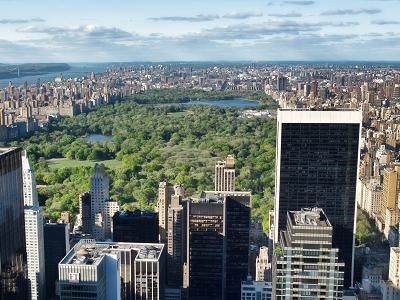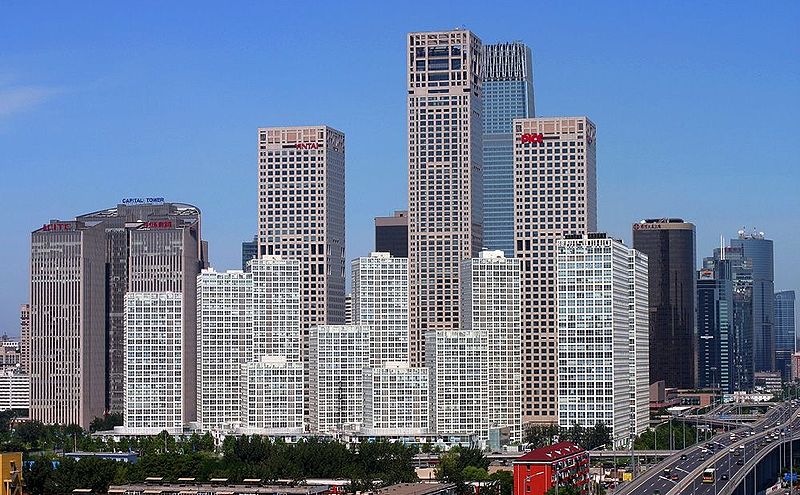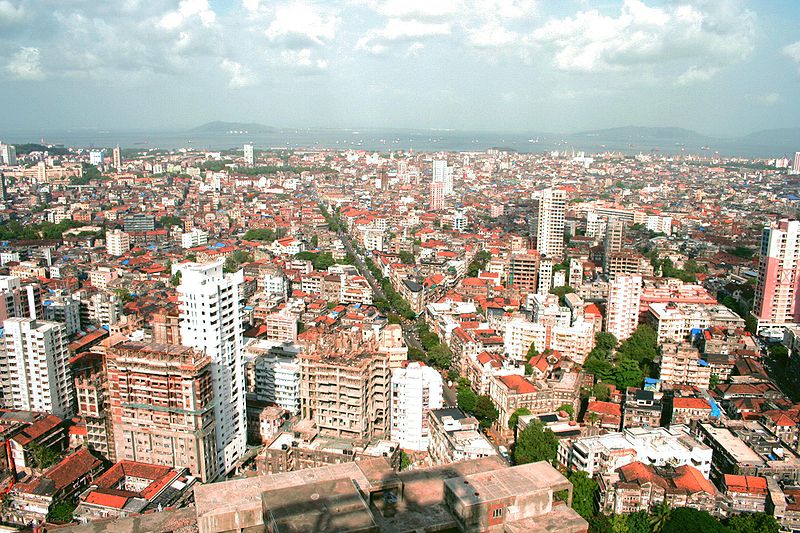Global partnerships for environmental progress
Reducing the threat of climate change depends on building experience from many environment action plans and efficiency programmes. The world cannot afford to wait until all international agreements are ironed out before taking positive action that will form the basis for solid progress. The time is right to build on the solutions that are working today.

When NRDC first started to address climate change in the late 1980s, the international community believed we had ample time to create an elaborate treaty framework to deal with what was seen as a far-off threat. We spoke in terms of forecasts and future projections of distant impacts. Today, we simply have to look outside the window to realise that climate change is devastating our communities right now. We have run down the clock in talking and debating. Now is the time for action.
That action must occur at all levels. Even as international treaty negotiations grind forward, we must now implement climate solutions within nations, cities, and companies. The good news is this is already happening.
Since 2009, we have seen two important shifts: first, most countries aren’t just talking about what they might be able to do in the future to reduce emissions; they are beginning to act on those actions today. Second, the list of countries with specific climate commitments has increased and reached well beyond the big emitters.
At the same time, cities around the globe have set targets to reduce their global warming pollution. New York City (pictured above), for instance, has launched a host of energy efficiency, transit and tree-planting programmes to cut city-wide greenhouse gas emissions by 30 per cent. Companies are making similar strides. Microsoft has pledged to become carbon neutral by the end of 2013. At last year’s Rio+20 Conference, Femsa, a massive soft-drink bottler in Latin America, said it would get 85 per cent of its energy in Mexico from renewable sources.
Taken together, these measures can add up to real and lasting reductions in global warming pollution. NRDC supports this kind of multilevel, multifaceted approach, because no one single grand plan can drive the rapid emission cuts needed to mitigate climate change and to enable us to adapt to it. NRDC works with partners at state, city, and corporate levels to promote low-carbon energy technologies. The focus is on immediate and near-term action. In the United States, for instance, NRDC is not waiting for Congress to pass national climate legislation. Instead, we are supporting President Obama’s effort to use his existing authority to set limits on carbon pollution from new and existing power plants right now.
Current efforts around the world to reduce carbon are still not sufficient to defuse the climate threat, but they can get us moving in the right direction. Indeed, climate action builds on itself in three ways: first, it reduces actual emissions; next, it makes it easier to make more progress in the future because people see first-hand the economic, security and public health benefits of climate solutions. And then it builds momentum for new global agreements, because once countries have laid the groundwork at home, they are better positioned to agree to more ambitious shared targets.
Success breeds success, and NRDC collaborates with leaders and groups in the USA and around the world that want to turn today’s achievements into tomorrow’s triumphs. Here is a look at our work in two of the world’s key players on the climate stage.
China’s national clean energy policy
Although China has become the world’s largest emitter of greenhouse gases and is still highly dependent on dirty coal, the country is moving aggressively to tackle climate change and transition to a more sustainable development path. The government has committed to reducing its carbon intensity by 40 to 45 per cent from 2005 levels, and increasing the share of non-fossil energy sources to 15 per cent of overall energy consumption by 2020.
NRDC has worked since 1996 to help the Chinese government to promote sustainable development and scale up clean energy resources. The biggest and cleanest resource of all is efficiency – getting more productivity using less energy – and NRDC has helped our Chinese partners unleash enormous energy savings.
Several years ago, for instance, we began working with provincial leaders in Jiangsu to develop what we call ‘efficiency power plants’. Instead of simply building new coal-fired power plants to meet growing energy demand, Jiangsu chose to invest in energy measures that help local enterprises reduce their energy consumption. In the first three years of this programme alone, Jiangsu avoided the need to build 300MW in new power plant capacity, and saved enough electricity to power 3.3 million Chinese homes and cut carbon emissions by about 3.4 tons a year – the equivalent of taking nearly 6 million passenger cars off the road every year. The efficiency programme achieved this success at one-third of the cost of meeting electricity demand with new power plants.
Since then, other provinces have followed suit in establishing ‘efficiency power plant’ and ‘demand side management’ programmes, and the momentum continues to build. In 2011, the central government implemented national demand side management (DSM) regulations that require grid companies throughout China to meet specific energy saving and demand reduction targets. The following year, the central government initiated a city programme to scale up local DSM efforts through innovative local policies, effective use of market mechanisms, and collaboration with grid companies. The goal is to reduce or shift electric demand by between 4 and 6 per cent. NRDC’s on-the-ground staff is committed to helping these pilot cities succeed. Our partnership with the Beijing Energy Conservation Center to support Beijing’s (pictured left) DSM pilot city programme was chosen as one of six US–China EcoPartnerships in 2013.
Starting at local levels with demonstration projects has become an effective approach to spurring national policy advancement in China. The Chinese government has supported large numbers of demonstration projects on green buildings, building efficiency and industrial efficiency for over a decade, and more recently on low-carbon cities and carbon trading. NRDC has worked with a broad range of Chinese partners to contribute to these endeavours. We were the first international environmental organisation to establish a green buildings programme in China, and provided technical input to the development of China’s first national building energy efficiency standards. We continue to work at both local and national levels in China in partnerships with governmental, academic, non-governmental and business players to help China expand its plentiful low-carbon resources.
India Initiative on Climate Change and Clean Energy
In recent decades, India has stepped onto the world stage as an emerging global leader and a regional powerhouse. The country’s energy needs are rising, but so is the call for an environmentally sustainable future for its rapidly growing cities and rural communities. As climate change bears down on the world, India has the opportunity to lead by transforming to a low carbon economy. With the second largest population in the world, India’s challenge to supply clean energy is matched only by its potential for environmental success.
NRDC’s India Initiative on Climate Change and Clean Energy, launched in 2009, works with partners in India to help expand low-carbon solutions and build resilient communities. Our efforts start with strengthening the growing cooperation between India and the United States. We urge key policy-makers in both nations to substantially increase bilateral cooperation on climate change and clean energy.
At the same time as we push for greater international collaboration, we also help local governmentofficials and business leaders tap clean energy resources. As in China, we believe efficiency is the most promising resource available, and we focus on improving the efficiency of India’s building stock. Buildings already account for more than 30 per cent of India’s electricity use, and two-thirds of the buildings that will exist in India by 2030 have yet to be built. NRDCis partnering with Indian groups to share our efficiency expertise on buildings and appliances, with the goal of creating efficiency solutions for the Indian context.
In the major technology center of Hyderabad, we are working with city officials, technical experts, real estate groups, universities and banks to increase building efficiency by implementing India’s Energy Conservation Building Code. We are also engaging with energy experts to increase efficiency in India’s booming consumer appliance market by improving standards and testing for appliances such as televisions, air conditioners and lighting. And we are helping make the business case for investing in efficiency.
A recent NRDC case study, for instance, showed how Godrej & Boyce – one of India’s largest industrial corporations – transformed its South Mumbai (pictured right) headquarters into an energy-efficient flagship. Only two years after the upgrade, Godrej Bhavan’s electricity use has already dropped by more than 12 per cent, representing a 28.6 per cent savings in electricity costs. Its savings on electricity alone will allow Godrej & Boyce to pay back the cost of its energy retrofits in less than five years.
Energy saving measures will help India reduce its global warming pollution, but at the same time, the nation must also help its citizens prepare for climate impacts that are already unfolding.
In 2010, a major heat wave struck Gujarat’s main city, Ahmedabad. As the blistering heat wore on, heat-stressed people poured into hospitals, suffering from dehydration, heatstroke and respiratory problems. Paediatric wards were especially crowded with patients, since heat takes a greater toll on babies and children. People living in slums were also hit hard. Heat-related illnesses increase by more than 50 per cent for slum residents experiencing chronic diarrhoea, infections or other conditions.
The summer of 2010 was a wake-up call. Like Superstorm Sandy in New York, the deadly heat wave revealed that Ahmedabad needed to prepare better for new levels of extreme weather. Fortunately the city has risen to the challenge. The Ahmedabad Municipal Corporation has designed a new Heat Action Plan based on scientific research conducted by NRDC and our partners. The Heat Action Plan will create an early warning system to alert people when temperatures rise to dangerous levels and teach residents how to prepare for extreme heat. It will also ensure that agencies are better coordinated to respond to dangerous heat waves. Once again, this effort should serve as a model for other state and national programmes as well.
Conclusion
In the end, it will require many more heat action plans and efficiency programmes and renewable energy projects to reduce the threat of climate change. But we cannot afford to wait for the most comprehensive agreement or the most aggressive carbon reduction targets. We must act today. We must champion the solutions that are already cutting emissions. This is the goal of NRDC’s international climate work: we support partners at all levels of society who ask, “What can I do on my watch to tackle climate change right now?” After all, the planet does not need more promises for the future. It needs accomplishments in the present.








